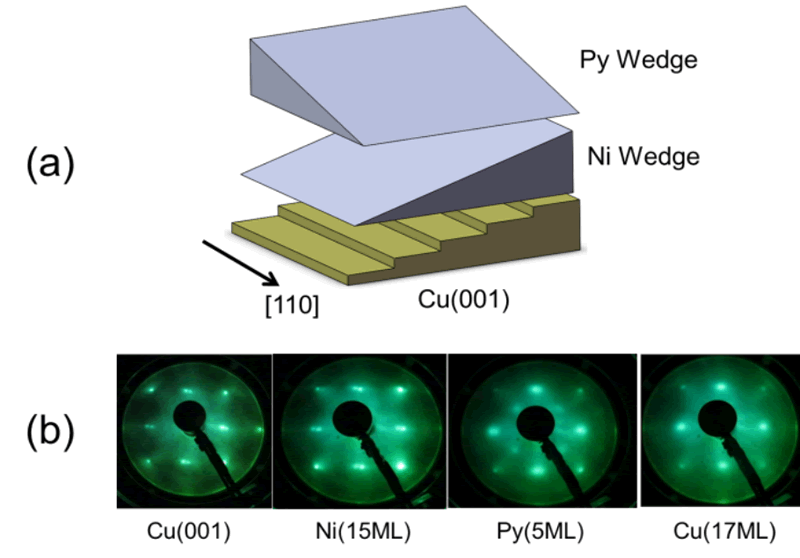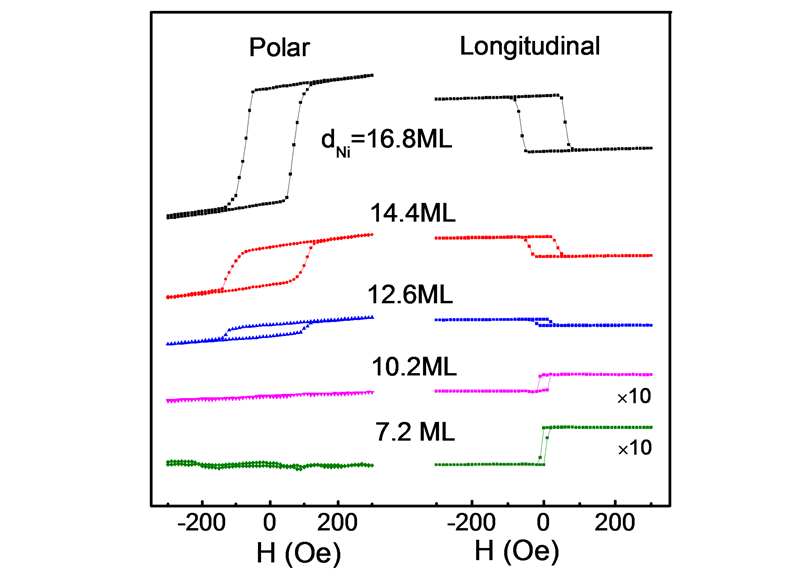
Tailoring the magnetic anisotropy of Py/Ni bilayer films using well aligned atomic steps on Cu(001) |
|
Tailoring the spin orientation at the atomic scale has been a key task in spintronics technology.While controlling the out-of-plane to in-plane spin orientation has been achieved by a precise control of the perpendicular magnetic anisotropy at atomic layer thickness level, a design and control of the in-plane magnetic anisotropy has not yet been well developed. On well aligned atomic steps of a 6o vicinal Cu(001) surface with steps parallel to the [110] axis, we grow Py/Ni overlayer films epitaxially to permit a systematic exploration of the step-induced in-plane magnetic anisotropyas a function of both the Py and the Ni film thicknesses. We found that the atomic steps from the vicinal Cu(001) induce an in-plane uniaxial magnetic anisotropy that favors both Py and Ni magnetizations perpendicular to the steps, opposite to the behavior of Co on vicinal Cu(001). In addition, thickness-dependent study shows that the Ni films exhibit different magnetic anisotrop below and above ~6ML Ni thickness.
Fig. 5 (a) Schematic drawing of the double wedged Py/Ni films on vicinal Cu(001). (b) LEED patterns taken at E~130 eV at each growth stage of the vicinal Cu/Py/Ni/Cu(001).
Fig. 5. (a) Polar and longitudinal hysteresis loops of vicinal Cu/Py(6ML)/Ni/Cu(001) show clearly the SRT from in-plane to out-of-plane directions as the Ni film increases above 11ML. The in-plane magnetic field was applied perpendicular to the atomic steps for longitudinal loop measurement. (b) Polar MOKE signal (arb. unit) in the Py-Ni thickness plane. Dashed line indicates the SRT point.
|
|


